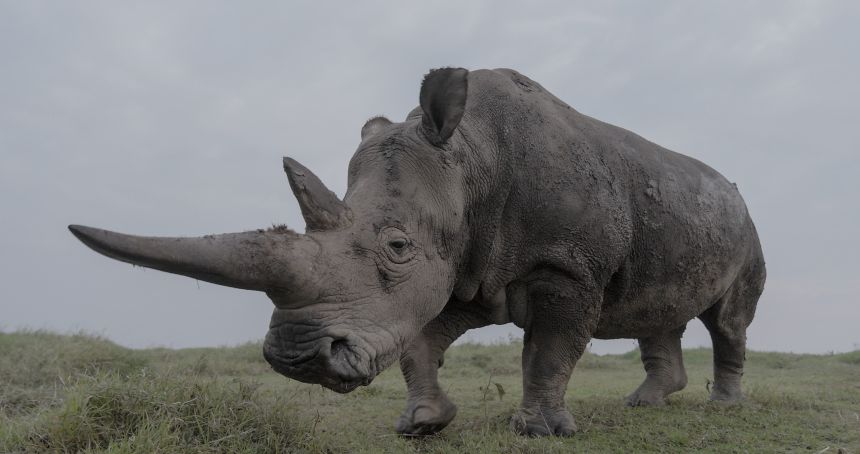Tweet
Email
Link
EDITOR’S NOTE: Call to Earth is a CNN editorial series committed to reporting on the environmental challenges facing our planet, together with the solutions. Rolex’s Perpetual Planet Initiative has partnered with CNN to drive awareness and education around key sustainability issues and to inspire positive action.
At a nature reserve in central Kenya, the last two northern white rhinos in existence live under the 24/7 protection of armed guards.
The subspecies has been driven to near extinction by decades of poaching and civil war in its range of central Africa.
A new documentary, “The Last Rhinos: A New Hope,” which premiered on National Geographic on August 24, and is now streaming on Disney+ and Hulu, chronicles the fight to save the northern white.
The film opens with the last, ragged breaths of a male rhino named Sudan. In 2018, the animal was euthanized at the age of 45 due to poor health, leaving the now 36-year-old female Najin and her 25-year-old daughter Fatu as the last members of their subspecies on Earth.

Over 40-some minutes, photographer Ami Vitale, who has been documenting the rhinos since 2009, highlights their plight, the scientists who have dedicated their lives to trying to revive the subspecies, and the caretakers that spend more time with the animals than their own families.
The high-stakes process to save them includes in vitro fertilization (IVF) combining sperm collected from males before they died, and oocytes, egg cells, collected from Fatu. Najin is no longer healthy enough to provide eggs to the program.
This year, BioRescue, a consortium working to save the rhinos, has performed three oocyte collections from Fatu. In total, the team has produced 38 northern white rhino embryos.
Neither Najin nor Fatu can carry babies for various health reasons, so the team is using closely related southern white rhinos as surrogates. “None of this has ever been done before,” says Vitale, in the movie. “It’s a scientific first.”
The film also sheds light on some of the project’s triumphs and heartbreaks. In late 2023, a 13-year-old southern white rhino named Curra died from a bacterial infection. A postmortem investigation found a 70-day-northern-white-fetus in her womb – the world’s first IVF rhino pregnancy.
“It perfectly captures the pressure that we work under,” says Jan Stejskal, the main coordinator of BioRescue and the director of communication and international projects at Safari Park Dvůr Králové in the Czech Republic.
He adds that it’s difficult to convey some elements of the effort, like how much collaboration is required.
Today, there are five surviving rhino species across Africa and Asia. Only about 17,000 southern white rhinos remain, mostly in South Africa, and they’re classified as “near threatened” by the International Union for Conservation of Nature.
Others face worse prospects. In Indonesia, for example, there are about 50 living Javan rhinos, according to the International Rhino Foundation. The hairy, two-horned Sumatran rhino isn’t faring better, with less than 50 individuals in the wild.
Stejskal says the IVF project could prove valuable for working with other species in the future.

But there are immense challenges in carrying out a complicated medical process in creatures that weigh thousands of pounds – including getting the dosage of anesthesia right when collecting eggs and making sure the scientists don’t get hurt.
Stejskal adds that the thawing of an embryo needs to be timed to match when the female rhino can be sedated for implantation. “Sometimes the animal is sedated in seven minutes,” he says, “sometimes it takes 47 minutes.”
No northern white rhino embryos have yet developed into a successful full-term pregnancy. Still, Stejskal says that he is hopeful that will happen in the foreseeable future.
In the meantime, he hopes the documentary helps raise awareness of the advancing reproductive technology getting closer to becoming a reality. “We have to try to involve these approaches into wider conservation efforts,” he says.
But he’s careful to add that advancing technology should not be used as an excuse to continue depleting nature.
Anna Tunkova contributed to this story.

